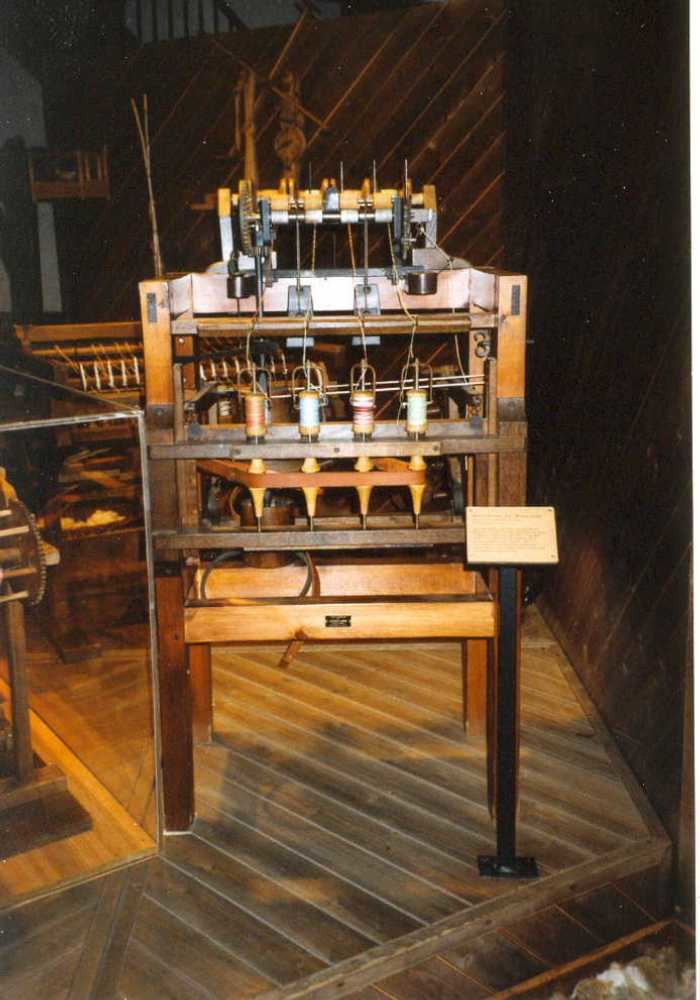 | ||
The water frame is the name given to a water-powered spinning frame which was an easy way to create cotton thread. The first time the machine was used in 1768. It was able to spin 128 threads at a time, which was an easier and faster method than ever before. It was developed by Richard Arkwright, who patented the technology in 1767. The design was partly based on a spinning machine built for Thomas Highs by clock maker John Kay, who was hired by Arkwright. Being run on water power, it produced stronger and harder yarn than the then famous 'Spinning Jenny', thus, greatly ushering the factory system.
Contents
Principle of operation
The water frame is the name given to a spinning frame, when water power is used to drive it. Both are credited to Richard Arkwright who patented the technology in 1768. It was based on an invention by Thomas Highs and the patent was later overturned.
The water frame is derived from the use of a water wheel to drive a number of spinning frames. The water wheel provided more power to the spinning frame than human operators, reducing the amount of human labor needed and increasing the spindle count dramatically. However, unlike the spinning jenny, the water frame could spin only one thread at a time until Samuel Compton combined the two inventions into his spinning mule in 1779.
The water frame was originally powered by horses at a factory built by Arkwright and partners in Nottingham. In 1770 Arkwright and partners built a water powered mill in Cromford, Derbyshire.
Cromford
In 1771, Arkwright installed the water frame in his cotton mill at Cromford, Derbyshire, on the River Derwent, creating one of the first factories that was specifically built to house machinery rather than just bringing workers together. It was one of the first instances of the working day being determined by the clock instead of the daylight hours, of people being employed rather than just contracted. In its final form, combined with his carding machine, it was the first factory to use a continuous process from raw material to finished product in a series of operations.
Arkwright played a significant part in the development of the factory system as he combined water power, the water frame, and continuous production with modern employment practices.
